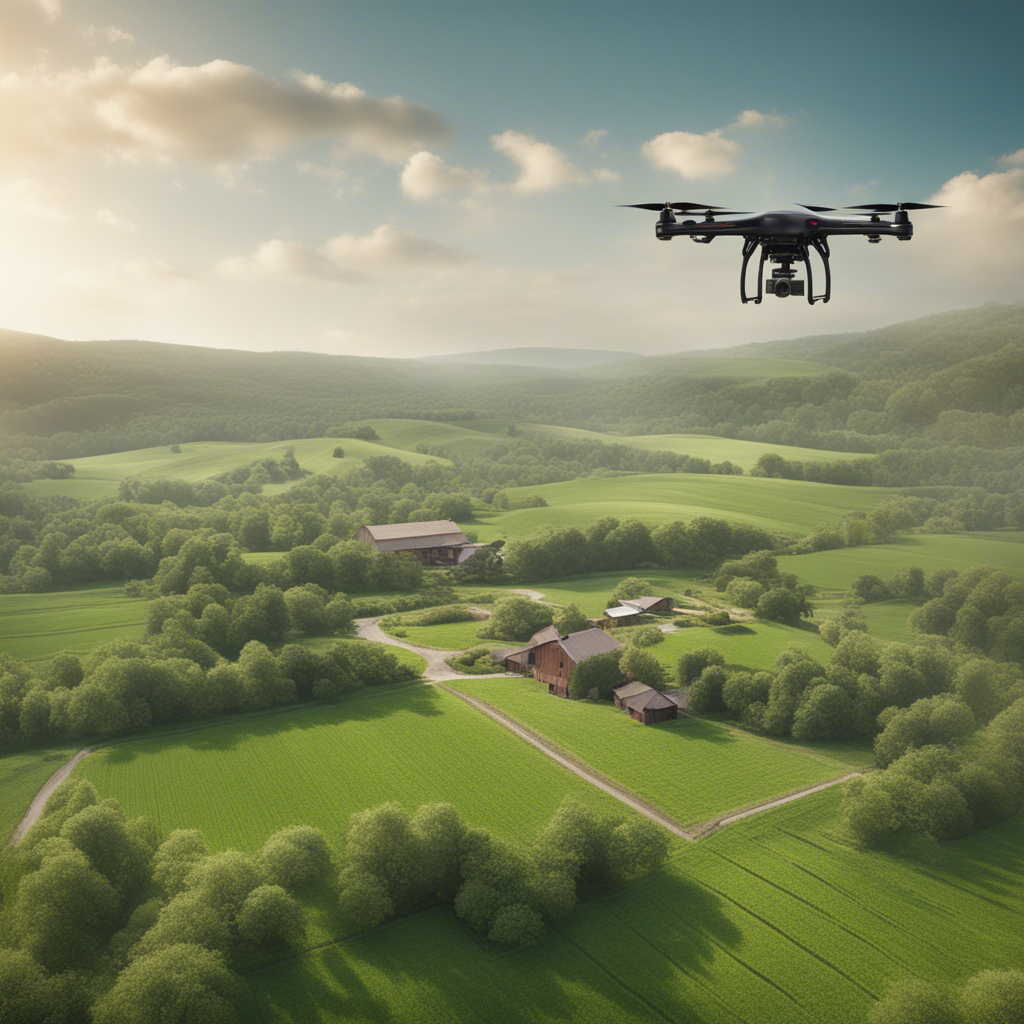
Drones in Agriculture: A Technology Overview
Introduction
The agricultural industry is constantly evolving, with new technologies driving advancements across various aspects of the field. One such technology that has gained significant traction in recent years is drones. Drones, also known as unmanned aerial vehicles (UAVs), have the potential to revolutionize agriculture by improving efficiency, productivity, and sustainability. In this blog post, we will explore the applications of drones in agriculture and the benefits they offer to farmers.
Aerial Imaging for Crop Monitoring
One of the key functions of drones in agriculture is aerial imaging, which allows farmers to monitor their crops more effectively. Equipped with high-resolution cameras, drones can capture images of fields from various angles and altitudes. These images can provide valuable insights into crop health, including early detection of diseases, nutrient deficiencies, and pest infestations. By identifying problem areas early on, farmers can take targeted action, thereby minimizing crop losses and maximizing yields.
Precision Agriculture and Data Analysis
The data collected by drones through aerial imaging is an integral part of precision agriculture. Precision agriculture refers to the practice of optimizing crop production by using data-driven insights to make informed decisions. Drones play a vital role in this process by providing real-time, high-resolution data about crop health and environmental conditions. With the help of sophisticated analytics software, farmers can analyze this data and generate detailed maps for precise applications of fertilizers, pesticides, and water resources. This precision ensures that resources are used efficiently, reducing costs, and minimizing environmental impact.
Crop Spraying and Seeding
Drone technology has opened up new possibilities for efficient and targeted crop spraying and seeding. Equipped with specially designed tanks, drones can carry pesticide or fertilizer solutions and spray them precisely over specific areas. This method eliminates the need for traditional ground-based machinery, reducing soil compaction and minimizing human exposure to chemicals. Additionally, drones can access challenging terrains, such as hilly or uneven fields, that may not be easily accessible by conventional farming equipment. This capability increases the coverage and effectiveness of crop spraying and seeding operations, leading to improved crop health and higher yields.
Water Management and Irrigation
Water scarcity is a growing concern in the agricultural sector. Drones offer an innovative solution to address this challenge by enabling efficient water management and irrigation practices. By collecting data on soil moisture levels and plant health, drones can help farmers optimize their irrigation schedules and target water usage only where it is needed, minimizing waste. Drones equipped with thermal sensors can also detect variations in crop temperature, indicating areas of underlying water stress. This information allows farmers to make data-driven decisions to prevent crop damage and ensure optimal water allocation.
Livestock Monitoring and Herd Management
Drones are not limited to crop-related applications; they can also be valuable tools for livestock monitoring and herd management. With thermal and infrared cameras, drones can track the health and movement of livestock in large, open areas. This technology helps identify sick or injured animals quickly, allowing for early intervention and minimizing the spread of diseases. Drones can also aid in locating lost or stray animals, reducing the time and effort required for manual search operations. By providing real-time data on the location and behavior of livestock, drones enable farmers to make informed decisions for better herd management.
Regulatory Considerations and Future Prospects
While drones offer numerous benefits to agriculture, their deployment is subject to regulatory considerations. Many countries have strict rules and procedures governing drone operations, including obtaining the necessary licenses and adhering to flight restrictions. Compliance with these regulations is critical to ensuring safe and responsible drone usage in agriculture.
Looking ahead, the future prospects for drones in agriculture are promising. Technological advancements such as artificial intelligence (AI) and machine learning have the potential to further enhance the capabilities of drones. Imagine drones equipped with advanced AI algorithms that can not only identify crop diseases but also recommend suitable treatments based on historical data and patterns. These developments hold great promise for increased agricultural efficiency, sustainability, and productivity.
Conclusion
Drones are revolutionizing the agricultural industry by offering innovative solutions in crop monitoring, precision agriculture, crop spraying, water management, livestock monitoring, and herd management. The drone technology’s ability to provide real-time, high-resolution data allows farmers to make data-driven decisions, leading to better resource allocation, improved crop health, and increased yields. However, regulatory considerations must be taken into account to ensure safe and responsible drone usage. As technology continues to evolve, the future prospects for drones in agriculture are exciting, promising even greater advancements in agricultural practices.
Disclaimer: The information provided in this blog post is for educational purposes only and does not constitute professional advice. Please consult relevant authorities and experts before implementing any drone operations in agricultural settings.
Suggested Visual Content:
- Infographic showcasing the benefits of drones in agriculture
- Diagram explaining the various components of a drone used in agriculture
- Chart highlighting the increased efficiency and productivity achieved through drone usage in different farming operations
References:
-
Osornio-Rios, R. A., et al. (2019). A Review of Unmanned Aerial Vehicles (UAVs) for Precision Agriculture. Remote Sensing, 11(12), 1448. doi:10.3390/rs11121448
-
Meyer, G. E., & Neto, J. C. (2008). Validation of the Performance of a Machine Vision Crop Sensor for Precision Agriculture. ASABE Annual International Meeting.
-
Calvino, T. (2020). Precision Agriculture: Why are Drones Important in Modern Farming? Retrieved from https://www.autoevolution.com/news/precision-agriculture-why-are-drones-important-in-modern-farming-150826.html






